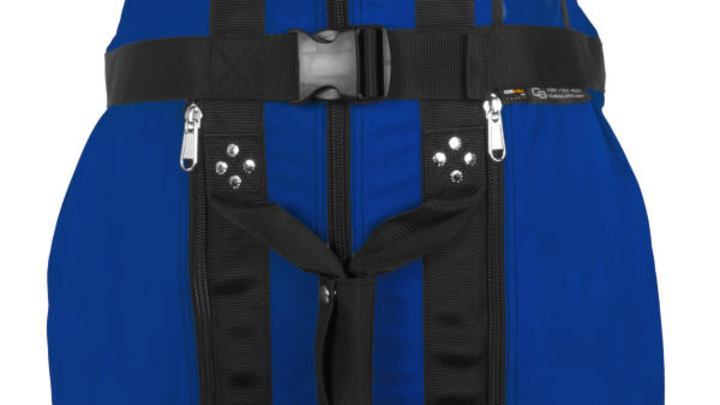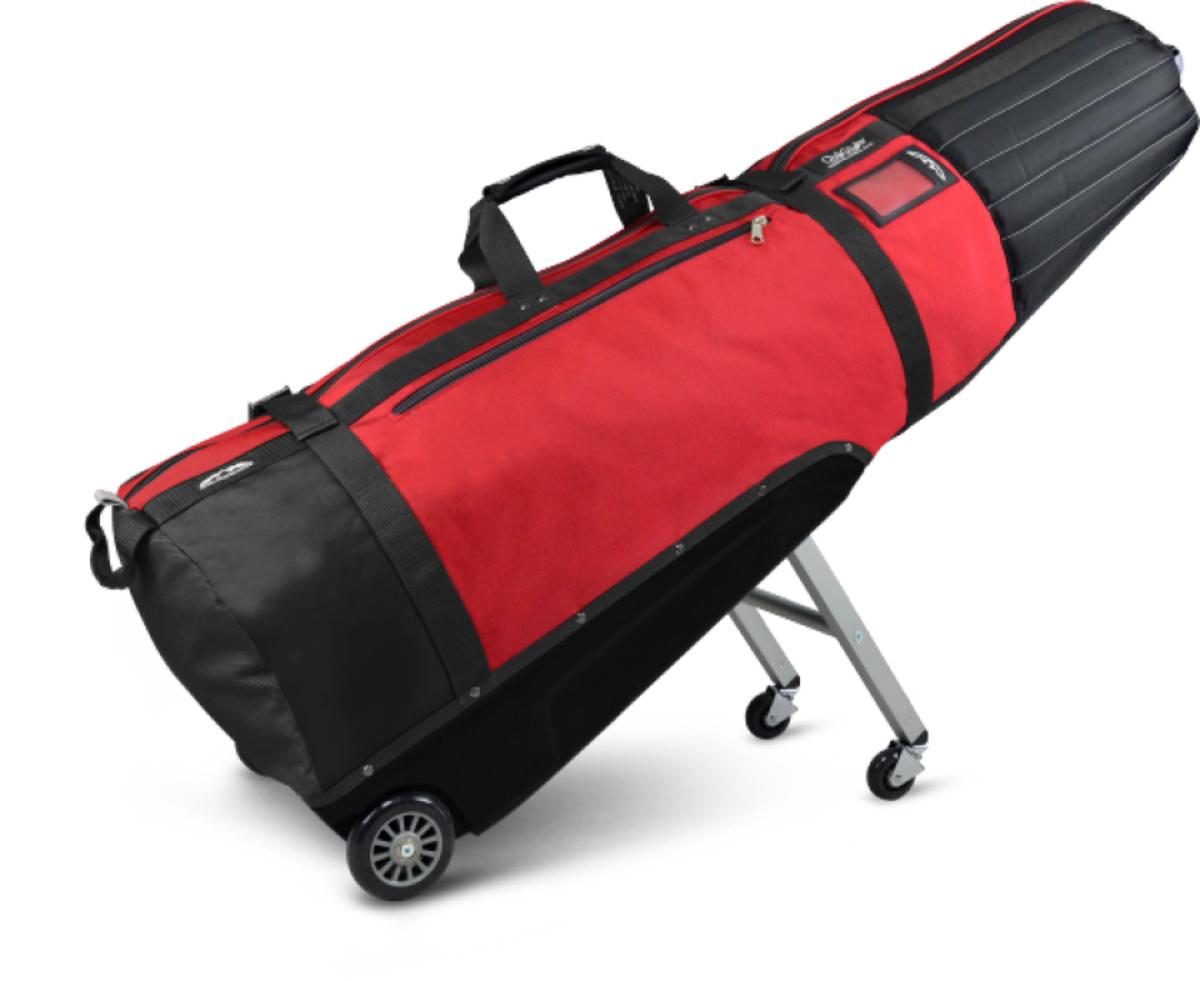Travel bags help golf roadies fight back

One in a weekly series of stories about golf gear to run each Wednesday
Graeme McDowell experienced my worst golf travel nightmare on July 1: the airline lost his sticks somewhere between Paris and Manchester. If it hasn't happened to you yet, consider yourself among the lucky ones.
For McDowell, this giant headache was exacerbated by the fact that he was scheduled to play in a 36-hole qualifier for the British Open at Carnoustie. Adding insult to injury, the airline already had lost his clubs for eight hours on his trip from Hartford, Conn., to Paris. The response from Air France was typical: “Just basically get in the queue. You're one of many people that have lost a bag and you'll wait your turn," McDowell said.
Ultimately, McDowell withdrew from the qualifier, but not before pleading for “#help” via Twitter, which shamed the airline into redoubling its efforts and led to reuniting McDowell with his arsenal of Srixon clubs at 3 a.m. on the eve of the Irish Open.
“If it wasn't for Twitter and the fact the story really gained a huge amount of momentum to where Air France's PR department had to call me and say, ‘Listen, we have to sort this out for you,’ the clubs would still be in Paris somewhere,” McDowell said ahead of the Irish Open, where he tied for 40th.
McDowell's situation is symptomatic of a larger problem: traveling with golf clubs is becoming more and more of a chore. More stringent security measures implemented post-9/11 can explain away only part of the problem and ignores the fact that we, golfers, are treated like second-class citizens when flying to our latest, greatest golf destination.
Here's just a partial list of what gets on my nerves: often, we have to sign a waiver if we have a soft-cover case; sometimes we have to wheel our clubs to T.S.A. ourselves; depending upon our airline status, we pay additional fees if we exceed a weight limit, and without fail our bags are the last to be hauled off the plane, and usually to a separate conveyor belt designated for oversized baggage. (I hate how you never really know from one airport to the next or even one visit to the next at the same airport where to look for your golf bag, but I digress.)
Ship Sticks and Clubs to Hire have built businesses to lessen the burden, but really we deserve better. Note to airline executives: if you're reading this, there is a significant opportunity to stand out as the friend to golfers with checked golf clubs. Golfers travel. This is a no-brainer.
My screed against our poor treatment by the airlines brings me to my main point: you had better have a darn good travel bag to ease the pain involved in transit. There are many options, but for my money two stand out among the crowd.
In 1990, when Jeff Herold introduced the Club Glove golf travel bag, he solved a long-running complaint of PGA Tour players. Road warriors everywhere have been the biggest beneficiaries.
“Their travel bags lasted roughly six to eight weeks,” Herold said. “There was a need for something indestructible, and nobody was filling that need.”

COURTESY OF CLUB GLOVE
Club Glove’s travel bag has been a hit among touring pros.
Today, Club Glove is the market leader. Approximately 200 touring pros use his product. “We’re No. 1, by far. It’s not even close,” Herold said of his ballistic travel bags, which feature impact-resistant materials. “There are only two reasons why they change travel bags: one, it gets stolen; two, it gets dirty.”
I paid for my Club Glove Last Bag Large Pro (MSRP: $319), so I can say with confidence that my only inconvenience with this sturdy bag is that I sometimes eclipse the weight limit because there’s ample room to fit more than 50 pounds of gear. (Tour pro move: Your Club Glove doubles as a laundry bag to store soiled, smelly clothing during the trip and on the flight home.)
All Club Glove products are made in the U.S. I also have the company's travel luggage, which allows me to use its Train Reaction System. Hook them together with the J-Hook and they stay connected and upright, even when you let go.
For decades, Sun Mountain Sports has made some of the game's most functional, durable and ingeniously designed golf bags and performance outerwear. Its ClubGlider Meridian Travel Bag is one of those products that make you go, Why didn't I think of that?
Gary Sherrell is the guy who did.

COURTESY OF SUN MOUNTAIN SPORTS
Sun Mountain’s ClubGlider helps golf travelers roll toward their destination.
Tired from dragging his golf-travel bag from the rental-car counter to check-in after a golf buddies trip to Las Vegas, Sherrell sketched a design for a better mousetrap on an Alaska Airlines napkin on the flight home. That sketch would become ClubGlider, integrating a set of retractable legs with in-line caster wheels into a golf travel bag. Sherrell's father-in-law duct-taped card-table legs to a traditional travel bag in building the original prototype. The ClubGlider first gained recognitionon the Golf Channel reality show “Fore Inventors Only.”
"Then the inventor realized he needed a partner to refine the design and build it," said Steve Snyders, who handles public relations for Sun Mountain.
The company had a licensing agreement for the first several years and now is full owner of ClubGlider. It has made getting to the ticket counter a breeze. In fact, you can push your fully loaded travel cover through an airport with the tip of an index finger, and the legs with pivoting caster wheels retract in one easy motion.
Both of these options rank on the pricey side for luggage – starting at $249 and up – but they are built to last. Just as long as they aren't lost in transit.
Adam Schupak has written about golf since 1997 for the likes of Golfweek,Golf.com and The New York Times. He is the winner of the National Sports Media Association's "Golf Article of 2017," and the author of Deane Beman: Golf's Driving Force. Email: golfsdrivingforce@gmail.com; Twitter: @adamschupak
